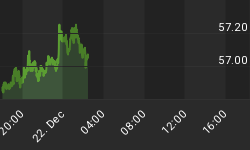Egypt currently has a total electricity capacity of about 23,500 megawatts, which the government hopes to increase to 58,000 megawatts by 2027.
A prime potential element in increasing this electrical output?
Renewables.
One might think, given Egypt's climate, solar?
Wrong again - wind power, which currently contributes less than 1 percent to Egypt's energy mix.
In 2003 Egypt had its wind potential assessed and published a wind atlas, which found that with wind speeds of 7-10 meters per second, almost the entire nation was ideal for wind power installations, with the country's best areas being along the Gulf of Suez coast. Two years later the atlas's coverage was expanded to mapping the country's wind potential in detail and determined that large desert regions both to the east and the west of the Nile River, as well as parts of Sinai, have average annual wind speeds of 7-8 meters per second.
Three years ago, the government of former President Hosni Mubarak approved a progressive and ambitious project by 2020 to produce 20 percent of its energy from renewables, with 12 percent being generated by wind power. Mubarak's cabinet approved incentives for wind power development, including exemption from customs duties and 20 to 25 year power purchase agreements with government guarantees, a policy that the country's new transitional government has endorsed.
According to the World Bank, if the policy comes to fruition, then Egypt will realize a 7,200 megawatt wind power capacity, cut vehicle emissions through improved public transportation, and make industry more energy efficient.
Jonathan Walters, transport and energy manager for the World Bank's Middle East and North Africa regions, said that "high and persistent" winds in the Gulf of Suez suggest Egypt has "excellent potential for wind power - among the best in the world."
The European Union's Clean Development Mechanism (CDM), which permits businesses and governments in industrialized nations to reduce their greenhouse gas emissions by investing in emission reduction projects in developing countries have already become involved in developing Egypt's nascent wind power industry.
CDM members Denmark, Spain and Germany collaborated on building Egypt's first wind farm, the 545 megawatt Zafarana wind facility, located 80 miles south of Suez on the Red Sea coast, which came online last year.
The Zafarana wind farm began construction in 2001. In 2010 120 megawatts of wind capacity were added to Zafarana in cooperation with the Danish International Development Agency (DANIDA), taking the facility's total installed capacity to 545 megawatts, allowing it last year to generate 1,147 gigawatt hours of electricity.
The European Investment Bank (EIB) is also involved in securing financing for Egyptian wind power projects.
Egypt's Minister of Electricity and Energy Hassan Younis is now seeking international funding to help underwrite the country's largest proposed wind facility of 120 megawatts, for which Egypt's private sector will underwrite 63 percent of the project, accordingly to a press release from Cairo's Egypt State Information Service. If all goes well, Younis said that the 120 megawatt facility is scheduled to become operational in 2013.
Bigger plans are afoot - according to Younis, the Ministry of Electricity and Energy has now issued new competitive bidding tenders for underwriting a project of establishing a 1,000 megawatt wind farm, scheduled for completion in 2015-2016, along with three other wind facilities. Under the terms of the government tender, investors will finance, build and operate the power facilities for a period of 20 to 25 years, selling the power generated by their wind farms to the state-owned Egyptian Electric Company at prices approved by the government.
The largest bottleneck thus far to expanding Egypt's wind power facilities is securing funding, but Cairo scored some successes even before the overthrow of the Mubarak regime. In mid-2010, the World Bank agreed to lend Cairo $220 million to build infrastructure that would connect wind farms to the national grid and to support some of the other wind farm projects planned in the country.
The Egyptian government is seeking to build production facilities to manufacture selective wind turbine components for the increasing demand of local and regional markets, initially focusing on producing turbine towers and blade facilities for the local market to supply a projected 400 megawatts of facility needs per year and then to export products to the emerging North African and Middle Eastern markets. NREA estimates that the blade manufacturing project requires an estimated investment of $59 million and the tower industry $147 million.
Ancient Egyptians worshiped the sun god Ra. If all goes to plan, then Ra might have to share his primacy with Qebui, god of the north wind and Maahes, the god of war and weather.
Source: http://oilprice.com/Alternative-Energy/Wind-Power/Sunny-Egypt-Interested-in-Wind-Power.html
By. John C.K. Daly of http://oilprice.com















